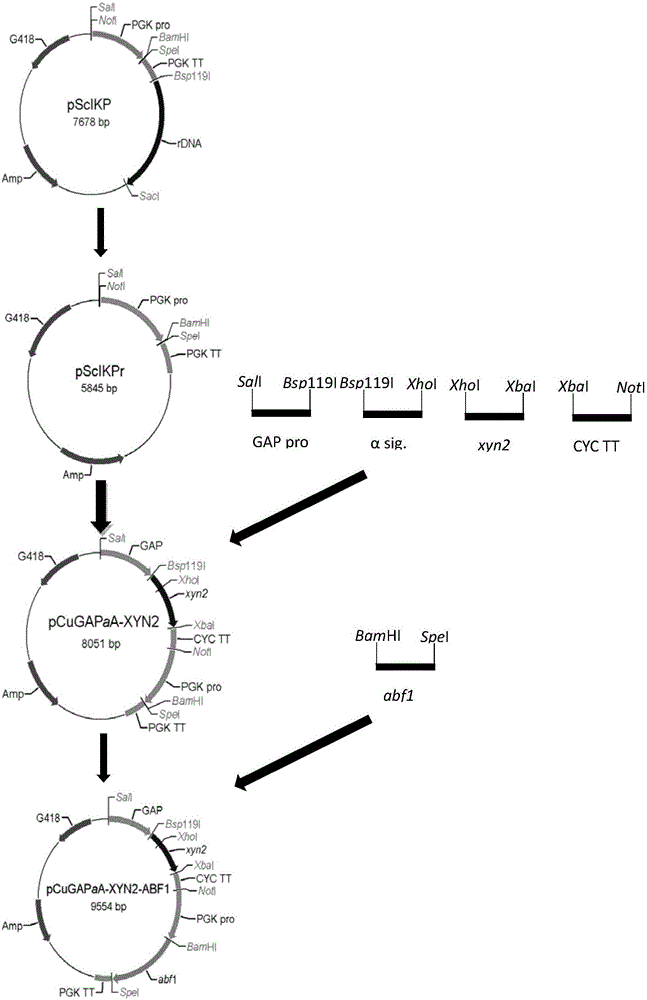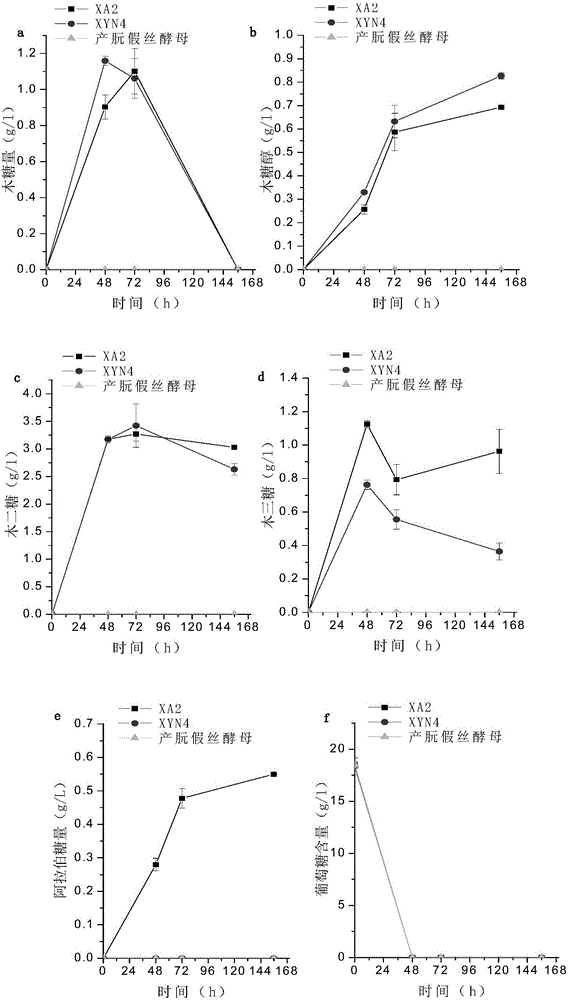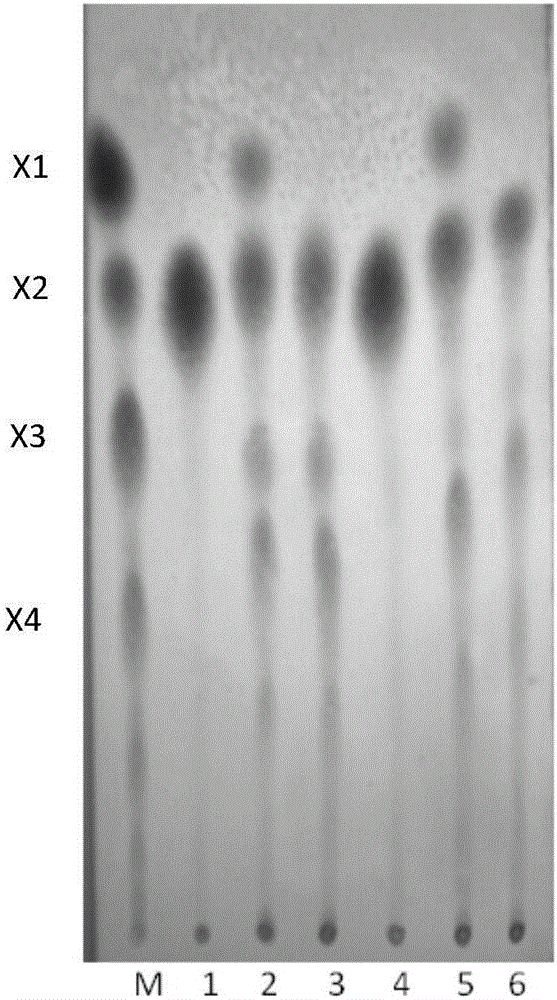Gene recombined candida utilis capable of degrading and utilizing hemicellulose and applications of gene recombined candida utilis
A technology of Candida utilis and genetic recombination, which is applied in the field of genetic engineering and fermentation engineering, can solve the problems of low economic value and low output of xylose, achieve high added value of products, simplify operation steps, and save production costs Effect
- Summary
- Abstract
- Description
- Claims
- Application Information
AI Technical Summary
Problems solved by technology
Method used
Image
Examples
Embodiment 1p
[0036] The construction of embodiment 1 pScIKPr carrier
[0037] S1. Double digest pScIKP with Bsp119I and SacI, the digestion conditions are as follows:
[0038]
[0039] After the above-mentioned components were mixed, the enzyme digestion reaction was carried out at 37° C. for 2 hours, and a fragment of about 5.8 kb was recovered by agarose gel electrophoresis.
[0040] S2. The above-mentioned 5.8kb fragment is subjected to end-smoothing treatment with S1 nuclease, and the conditions are as follows:
[0041]
[0042] After mixing the above-mentioned reaction components, react at 23°C for 10 minutes, then add 10mM EDTA to terminate the reaction; then use the PCR product purification kit (Tiangen Biochemical Technology Co., Ltd.) to purify and set aside;
[0043] S3. Self-circularize the fragment obtained in the above step S2 with T4 DNA ligase to obtain the transformed vector pScIKPr.
Embodiment 2
[0044] Construction of embodiment 2 xylanase gene (xyn2) expression cassette
[0045] S1. Design of target gene primers:
[0046] S11. Primers for the mature peptide coding region of xylanase: According to the sequence of the xylanase gene xyn2 of Trichoderma reesei provided by NCBI, use oligo6 biological software to design primers for specific amplification of xyn2 and mutated enzyme digestion The primers for the site, and the sequence of the corresponding enzyme cutting site are as follows:
[0047] Primers for xyn2 and primers for mutant XhoI and SacI sites:
[0048] Mxyn2-F:
[0049]
[0050] Mxyn2-R: 5'- TCTAGA TTAGTTGCTGACACTCTGTGAGGCAG-3'
[0051] The above are the amplification primers of xyn2, and the 5' ends of the two primers are respectively the restriction sites of XhoI and XbaI; the upstream primer simultaneously mutates the restriction site of XhoI in the coding region of xyn2 (dot added below).
[0052] Mxyn2-SacImut-F:
[0053]
[0054] Mxyn2-SacI...
Embodiment 3
[0086] Embodiment 3 Construction of arabinofuranosidase gene (abf1) expression vector
[0087] S1. Design and amplification of target gene primers: According to the sequence of arabinofuranosidase gene abf1 of Trichoderma reesei provided by NCBI, use oligo6 biological software to design primers and mutated restriction sites for specific amplification of abf1 The primers, and the sequence of the corresponding restriction site is as follows:
[0088] abf1 primers and abf1 mutant SacI site primers:
[0089] TrABF1-F: 5'- GGATCC TGCTCTCCAACGCTCGTATC-3';
[0090] TrABF1-R: 5'- ACTAGT TTAAGCAAAACCGCCACTAACCAC-3';
[0091]The above are the amplification primers of abf1, and the 5' ends of the two primers are the restriction sites of BamHI and SpeI respectively.
[0092]
[0093] Above are the primers for the SacI site in the mutated xyn2 coding region (the dots below).
[0094] S2. PCR amplification of the abf1 coding region fragment: a two-step PCR method was used to ampl...
PUM
 Login to View More
Login to View More Abstract
Description
Claims
Application Information
 Login to View More
Login to View More - R&D
- Intellectual Property
- Life Sciences
- Materials
- Tech Scout
- Unparalleled Data Quality
- Higher Quality Content
- 60% Fewer Hallucinations
Browse by: Latest US Patents, China's latest patents, Technical Efficacy Thesaurus, Application Domain, Technology Topic, Popular Technical Reports.
© 2025 PatSnap. All rights reserved.Legal|Privacy policy|Modern Slavery Act Transparency Statement|Sitemap|About US| Contact US: help@patsnap.com



